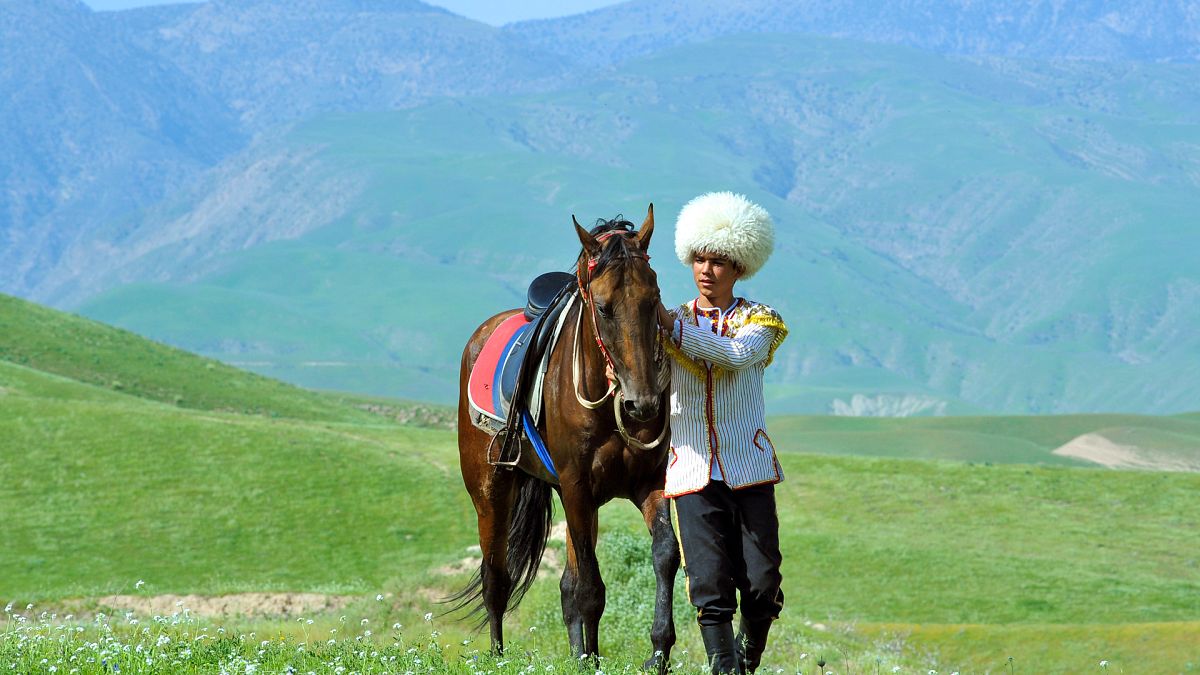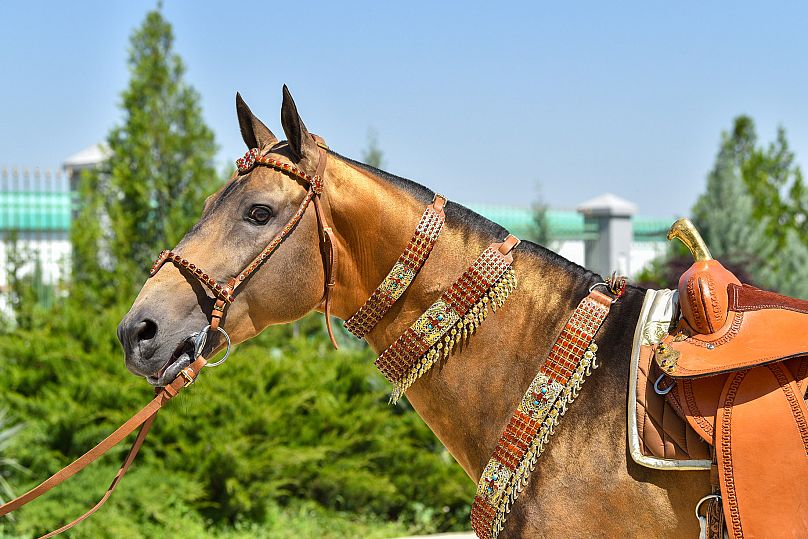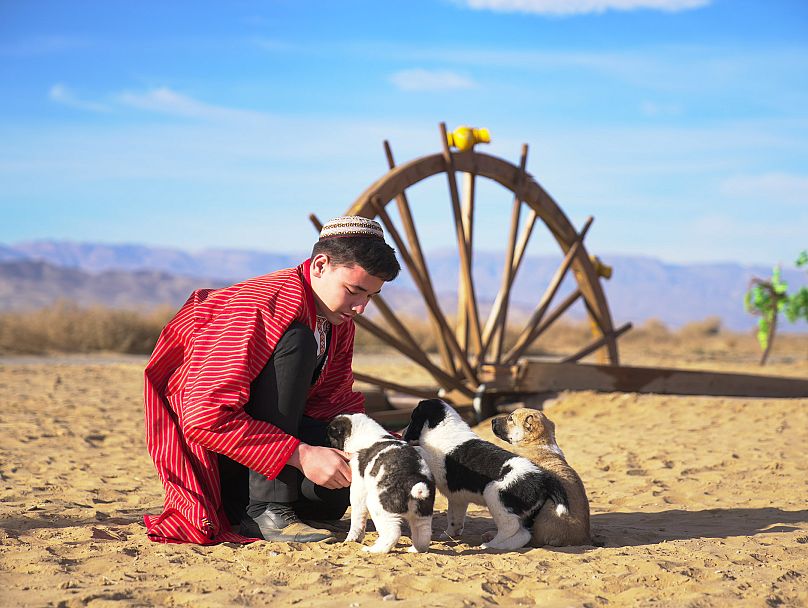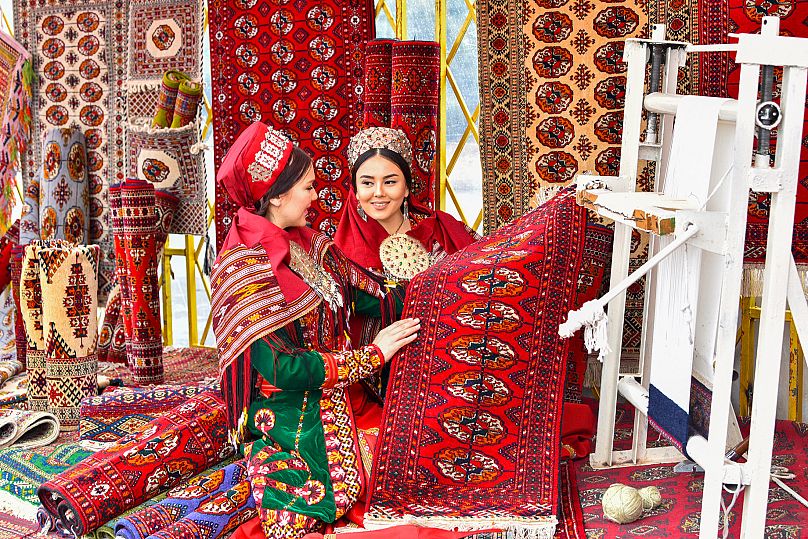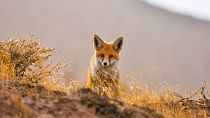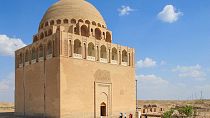Living outside the reach of ruling dynasties for thousands of years, the nomadic Turkmen people are not to be underestimated.
A dynamic bunch, composed of more than two dozen major tribal groups in existence since the ninth century, the Turkmen people have played a significant role in shaping the politics, economics, art and culture of Central Asia.
In our latest episode of Culture, we uncover some of the most significant symbols of Turkmen identity, spanning both agriculture and arts, starting with their valiant steed, the Akhal-Teke horse.
Turkmen’s golden horses
The horsemanship of the Turkmen people is unmatched worldwide. The Turkmen’s affinity for horses has been developed over millennia, evolving from a relationship of necessity - to aid the tribes’ movement and survival - and since becoming a beloved part of Turkmen lifestyle and culture.
Of particular significance is the Akhal-Teke horse, one of the rarest and most highly prized horse breeds in the world, featured as a symbol of freedom on Turkmenistan’s national coat of arms.
Bred to withstand extreme climates, the Akhal-Teke is among the oldest horse breeds in existence, originating some 3,000 years ago in the region of Akhal, in the south of present-day Turkmenistan.
Though admired for its satin smooth coat, the Akhal-Teke is more than just a symbol of beauty. Renowned for its speed, endurance and courage, the Akhal-Teke earns the nickname “golden horse” and is a firm symbol of pride for Turkmenistan.
The shared history of the Akhal-Teke and the people of Turkmenistan is celebrated on the last Sunday of April each year, on the ‘Day of the Turkmen Horse’, when fairs, exhibitions, equine beauty contests and speed races all take place.
The loyal protection of the Alabais
Traditionally living as pastoral nomads with livelihoods dependent on livestock, Turkmen tribes moved as the seasons changed to allow their flocks to graze. To protect their pastures and herd their livestock as they moved, the Turkmen enlisted the help of another four-legged friend.
This loyal protector is the Alabais, the larger-than-life Turkmen wolfhound and the world’s largest dog, weighing up to 80 kilograms. The Alabais is revered to this day, and acts as a symbol of the kinship between the Turkmen people and their ancient pastoral traditions.
Like the Akhal-Teke horse, the Alabais is celebrated in a state holiday every year.
A Turkmen woman’s weaving work
While the outdoor work of the tribe is predominantly done by men, the Turkmen women have their own established roles. Once sheep shearing is done in the spring and autumn seasons, the wool is handed over to the women to dye and weave. To do so, grasses such as chamomile and yuzarlik is heated to extract their pigment, resulting in a wide colour palette of natural dyes used to colour wool and other textiles before weaving.
The tradition of carpet weaving is a largely female practice, passed down from mother to daughter over the centuries. Within the traditional home their intricately woven carpets and patterned fabrics hang, serving both decorative and functional purposes. The time-honoured practice of Turkmen carpet weaving forms a major part of women's contribution to tribal cultural and economic life and earns recognition from UNESCO.
Each year in May, Turkmen Carpet Day celebrates the skills of talented Turkmen women and their lasting impact on these traditions.
Poetic identity
Art and literature in Turkmenistan also act as expressions of cultural identity. One of the most significant literary figures to the Turkmen people is the 18th century poet, Magtymguly Pyragy, famed for his poetic expressions on moral values, humanity, patriotism and love. His words, often performed in song, hold a deep significance for the Turkmen people and help root their national pride.
This year marks the 300th anniversary of Magtymguly Pyragy’s birth and in an effort to raise awareness of the man and his works around the world, Turkmenistan plans a whole host of cultural events.
It’s clear that from these rich agricultural and artistic traditions comes a proudly celebrated cultural identity. The Akhal-Teke horse, the Alabais, and Turkmen carpet all embody essential elements of this unique identity, while Pyragy’s poems put into words the intrinsic beauty of the entire nation, Turkmenistan.
